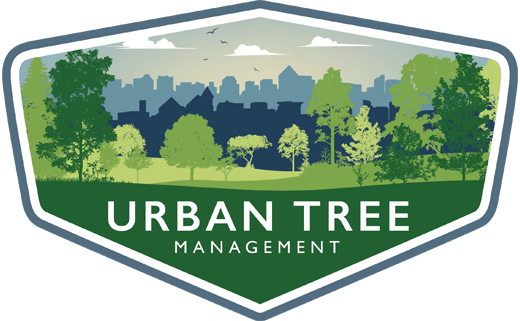Tree Surveys for Planning and Development
Trees play a crucial role on construction sites, both within and adjacent to the work areas, and are a significant factor in the UK's planning system.
Local authorities mandate BS5837 reports for planning applications involving sites with trees. A BS5837:2012 report catalogues the trees on a site, evaluates their health and value to the location, and outlines measures for their protection during and after construction.
Free Consultation
Fill in the from below and we'll be in touch to discuss your tree-related project or issue.
planNING & DEVELOPMENT
Planning Reports in Relation to Trees (BS5837)
Current best practice guidance for the relationship between trees and development is provided by BS5837: 2012 Trees in relation to design, demolition and construction.
Arboriculture and planning is the process of assisting decision-making, with regard to existing and proposed trees in the context of design, demolition and construction. Root systems, stems and canopies, with adequate allowance for future movement and growth, need to be taken into account in all projects, including those that do not require planning permission. The space required for any proposed new trees to become established is also an important consideration.
Urban Tree Management provides technical consultancy for trees in relation to development (British Standard 5837:2012), and have been collaborating with developers, house builders, architects, Local Authorities, planners and home owners for well over a decade, and have been integral to the success of hundreds of planning applications. Our quality of work and extensive experience working in the North West has allowed us to build an in-depth knowledge of local planning authority requirements and local planning restrictions that might apply to your site. Utilizing our wealth of knowledge and experience, we have produced technical reports for an extensive portfolio of clients, and work closely with numerous planning consultancies, developers, landowners and architectural practices to meet their arboricultural requirements.
Do I need an Arboricultural Survey?
If your application site contains a tree, or a tree is located within 15m of the application site, you are likely to require an arboricultural report to support your planning application.
For small construction projects on domestic sites, the information required may be quite brief and consist of annotated plans and a tree schedule. Still, if the proposal could affect a significant tree, then the level of detail required could increase. However, many of the tree survey reports we provide are for planning projects for home owners or small-scale housing developers. We are frequently contacted by people who are surprised to be told by the Planning Authority that they require a tree survey and report as part of their planning application.
BS5837 SURVEYS & REPORTS
Feasibility Assessments
Learn MoreComplete a tree survey to determine the age, diversity and quality of the existing tree stock on a development site. As technologies are developed and evolve, new opportunities arise and one of the most profound of these in recent years has been the boom in the drone sector. Drones can provide a quick and cost effective way of gathering data at all stages of a development, and we are licenced with the Civil Aviation Authority to use drone in a commercial environment. Prepare a feasibility assessment outlining the key constraints presented on a site
Tree Constraint Plan (TCP)
Learn MoreFollowing completion of a detailed initial tree survey at a site, information such as rooting areas, crown spreads and tree quality is drawn onto a topographical survey to form a Tree Constraints Plan. This constraints information is then used to influence detailed development design.
Arboricultural Impact Assessment (AIA)
Learn MoreAn Arboricultural Impact Assessment is a key element of a planning application relating to a site that is close to, or contains trees. This assessment will evaluate the direct and indirect effects of the development and where necessary, provide appropriate mitigation recommendations.
Tree Protection Plan (TPP)
Learn MoreTree Protection Plans accompany our Arboricultural Impact Assessments and site specific Method Statements. They provide detailed recommendations for tree protection methodologies to be implemented throughout development, to protect and safeguard retained trees.
Arboricultural Method Statement (AMS)
Learn MoreA fundamental part of trees in relation to development, an Arboricultural Method Statement is written in conjunction with an Arboricultural Impact Assessment. This document details tree protection methodologies and sympathetic solutions required to protect trees at a development site.
Arboricultural Clerk of Works (ACoW)
Learn MoreA system of Construction Site Monitoring is often required for protecting trees during construction on high profile sites and sites where trees are of particular importance due to their arboricultural, landscape or cultural value.
Arboricultural Services to support planning applications
Green infrastructure provides a range of spaces and assets that provide environmental and wider benefits. Including trees, hedges and woodlands in the planning of new urban environments at the early stage of development proposals allows the consideration of existing assets and the most suitable locations and types for new assets. We aim to match the site constraints and opportunities to tree requirements on new urban developments which will lead to more successful landscapes, through a combination of planting healthy, structurally sound trees in the right place will maximize benefit while minimizing the costs.
The latest Global Information Systems (GIS) will be used with the latest hard and software ensuring high quality accuracy and specialist tree software to allow for clear and concise mapping.
Concept Design
We work with the design team to ensure that trees are a core consideration in design evolution, seeking to help use trees to provide a Sense of Place and provide value to a development scheme.
Development Phase Support
We offer a service in monitoring development projects, working closely with the main works contractor and client team to maintain the balance between practical issues on site in having to complete a build, and ensuring that the retained trees are not impacted and they will continue to thrive post completion.
The Importance of Trees on Development Sites
The preservation of trees and other natural features within both new and existing developments offers immediate benefits, enhancing the site's aesthetic appeal and providing a sense of maturity to the surroundings. This integration raises the overall quality of the development, making it more attractive to potential buyers and increasing property values and marketability.
However, if trees are damaged during construction or if the design does not adequately accommodate their needs, they may decline and eventually die. This not only results in the loss of the initial benefits but can also lead to ongoing complaints from residents and stakeholders. Therefore, careful planning and design are essential to ensure that trees and natural features are preserved and thrive, contributing positively to the development in the long term.
BNG Compatible Baseline Tree Data
Starting February 12, 2024, Biodiversity Net Gain (BNG) becomes mandatory for new developments in England, requiring a 10% biodiversity improvement over the pre-development baseline. We offer tree survey data compliant with BS5837:2012 and BNG metrics, aiding in project approval and biodiversity enhancement.
Our services:
- BNG-Compatible Baseline Tree Data: Surveys tailored for BNG metrics.
- Ancient and Veteran Tree Expertise: Management of irreplaceable habitats.
- Mitigation Strategies: Collaborative approach for project success.
- Maintenance and Monitoring: Ensuring healthy, long-term tree habitats.
By choosing Urban Tree Management, clients can save time and money, ensure compliance, and enhance biodiversity.
We undertake development site surveys and reports in Greater Manchester, Cheshire, Lancashire, Merseyside and nationally for various projects, the local authority's in the areas we cover will a request tree survey reports with all planning applications
Before we can head out to your site and conduct a tree survey, we’ll need to ask you a few critical questions about your project. Fill out our quick and easy online form so we can capture the most important project information and provide you with a free quote that includes everything you need to know.
Experts in Trees, Planning & Development who can help with your project
Our BS5837 compliant tree surveys provide a comprehensive report for submission with any planning application for homeowners, architects & developers.

